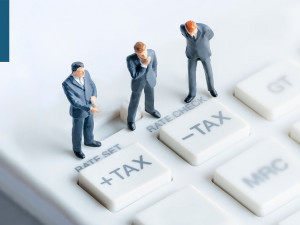
Firms slashing budgets to survive
Morning mid-market rates – The majors
23rd May: Highlights
- Economy shrinks, despite fall in unemployment
- Biden advisor believes rate hikes won’t bring recession
- Consumer mired in inflation concerns
Raising National Insurance, a grave error from Chancellor
Data released last week showed that the claimant count fell by 56.9k, far more than analysts had expected. However, with inflation reaching 9% and leading indicators of output slowing, there are growing fears that a recession will be almost impossible to avoid.
The cost-of-living crisis that had been feared since the Chancellor announced tax rises last November and rise in the cap on energy prices in response to the exponential rise in the cost of wholesale energy has exacerbated the issue.
It displays a worrying lack of forward-thinking on the part of Rishi Sunak that he was unable to foresee the issues created by the country’s emergence for the Pandemic, although, clearly, he was taken by surprise by the ferocity of the conflict in Ukraine and the effect it has had ion supply chains of several foodstuffs.
The Prime Minister has promised to use fiscal firepower to mitigate the cost-of-living crisis, He likened the support the lowest paid need to the support that was provided during the furloughs as lockdowns bit into wage packets.
There are several commentators who see the rise to 9% as being the highest headline inflation will reach, although the Bank’s own economists predict a high of 10%.
In other G7 nations, there is a growing feeling that the rate of inflation is slowing. That is not yet true in the UK with headline inflation rising from 7% in March to 9% in April, although the rise in the energy cap was the most significant contributor.
78 of the 80 items that make up the fictional shopping basket that is used by the Office for National Statistics to calculate the rate of inflation rose in April, the most that have been seen in forty years.
The pound remains pressured, but received a boost as the dollar index continued to correct last week. It traded between 1.2217 and 1.2524 in a particularly volatile week, and closed, close to its weekly high, at 1.2486.
This week, output data for services will be released. This is expected to show a slowing in activity, falling from 58.9 to 57.3. Manufacturing is expected to show a fall, but less so than services.
Considering your next transfer? Log in to compare live quotes today.
FOMC will vote for two or three more consecutive hikes
This week, personal consumption expenditures, the Central bank’s preferred measure of inflation, will be released. This is expected to be unchanged at 5.25%.
Although the market will take this and recent CPI data as evidence that inflation is beginning to slow, Fed Chairman, Jerome Powell remains extremely hawkish about price increases, vowing to continue to tighten monetary policy until the economy is back in order.
Other members of the FOMC believe that rates may need to be hiked above what most people consider to be the neutral rate to ensure that price increases are less volatile.
James Bullard, the President of the St. Louis fed believes that the front loading of rate increases, where they rise in increments of fifty basis points will mean that inflation will fall at a faster rate than expected
This will give the Central Bank the ability to be flexible in 2023, possibly even being in a position to bring rates back to the neutral rate, or possibly even a little below that level if the economy demands more support.
Going forward, the Pandemic as well as the conflict in Ukraine will change the entire dynamic of the economy. It appears that rate cycles are going to become shorter than the seven years that is currently believed to be the case.
Last week, the dollar index, having reached the market’s goal of 105, corrected as recent buyers took profits on long positions. There was also some improvement in risk appetite, which also pushed the index lower.
It fell to a low of 102.65, although it managed to claw its way back above 103 closing at 103.01.
This week, as well as PCE numbers, data will be released for, consolidated output as well as individually for services and manufacturing, new home sales and durable goods.
The minutes of the most recent FOMC meeting will be the highlight as the market gets to look at just how hawkish the Central Bank is prepared to be.
Rise from -22 to -21.5 hardly a cause for celebration
The full effect of sanctions on Russia and retaliatory actions by Vladimir Putin is still not being felt in full. There are likely to be shortages of many foodstuffs that are likely to push up prices and contribute to inflation, although the most recent data shows that its pace is moderating.
This may be a lull as the price of oil moderates. This is unlikely to see any change to the prospect of a rate hike in July
The Governor of the Banque de France François Villeroy de Galhau commented on Friday that the ECB’s short-term priority is now inflation and then mastering inflation.
High inflation is causing significant volatility and the Central Bank will need to ensure that it moderates. The President of the Bundesbank Joachim Nagel, who sits on the ECB’s Governing Board along with Villeroy, agreed, commenting that negative interest rates must now be considered a thing of the past.
While Nagel sees rate hikes as essential, he deferred comment on the size of any hike, believing that this is a matter for discussion by the board.
The German Finance Minister weighed into the discussion, commenting that Germany takes inflation very seriously. Christian Linder believes that the ECB must end expansive fiscal policy, and that that could put the euro at risk.
In a raft of comments from ECB Governing Council Members, Bank of Italy Governor Ignazio Visco commented that he expects a recession in the Eurozone, although it should be moderate unless conditions worsen considerably.
Last week, the ECB lowered its growth forecast from what it predicted in February. This was expected since conditions have worsened significantly.
There was something of a surprise in the release of Q1 GDP data. The economy grew by 5.1% between January and March, up from the first estimate of 5%.
While this didn’t produce any major change in market attitude, the euro did manage to recover against a weakening dollar.
It rose to a high of 1.0607 and closed at 1.0565.
This week will see continued confirmation of the July rate hike, together with data for German Economic Activity, output data, and German GDP.

About Alan Hill
Alan has been involved in the FX market for more than 25 years and brings a wealth of experience to his content. His knowledge has been gained while trading through some of the most volatile periods of recent history. His commentary relies on an understanding of past events and how they will affect future market performance.”



